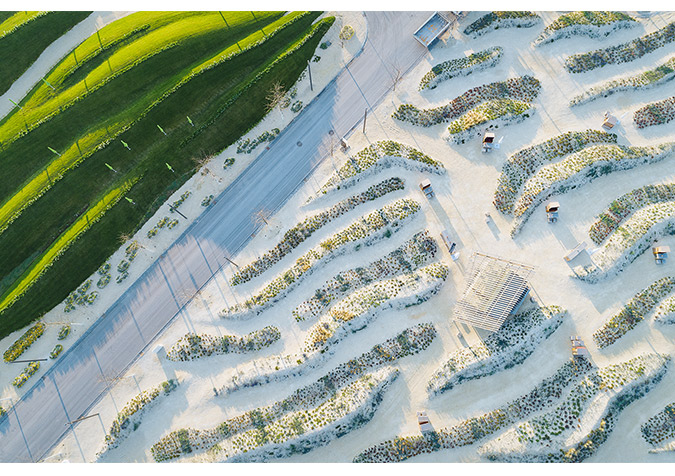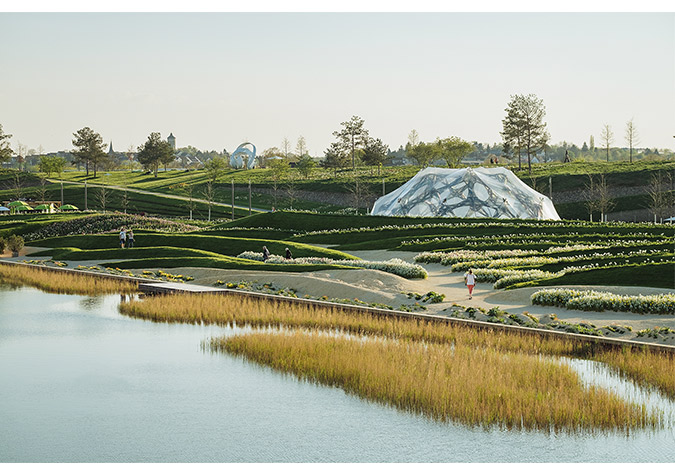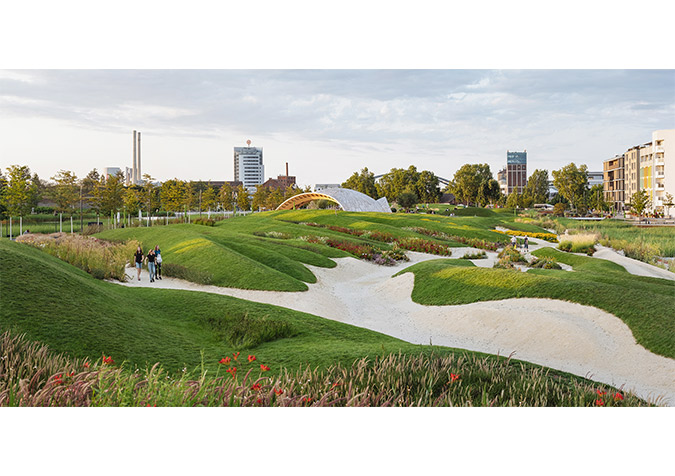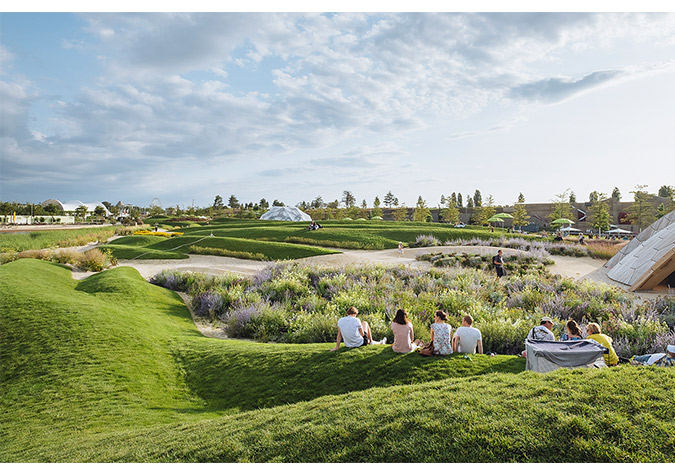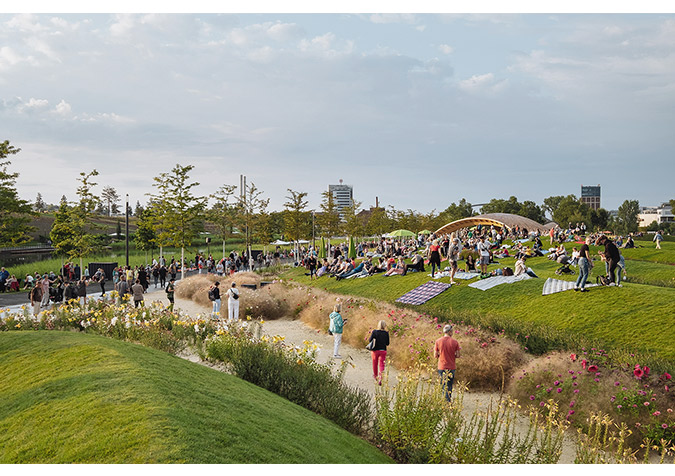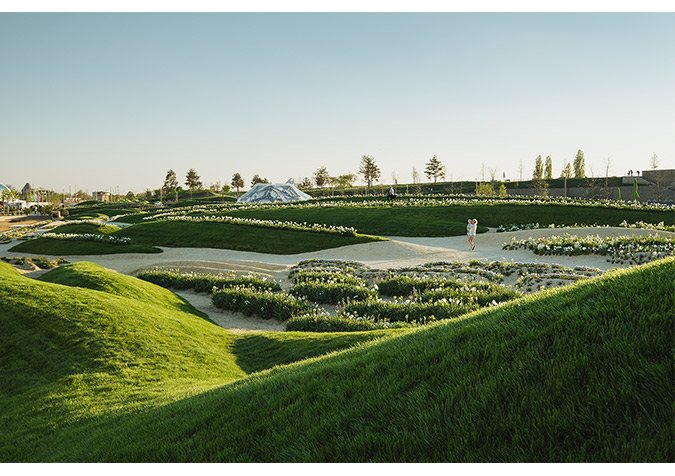Summer Island - Award for digital innovation
Temporary park landscape, 2016-2019, Heilbronn
Award for the German Landscape Architecture Prize 2021
"Landscape architecture and digitization" or "Building Information Modeling (BIM) in landscape architecture".
The Summer Island experiment was realized as part of the Heilbronn Federal Horticultural Show as one of the first completely 3D-generated and built landscape parks in the world.
With analog design methods, no adequate approximation of the natural phenomena could be achieved and the permanent change of the design process would have been difficult to continue. Therefore, the first drawings of moraines, dunes and sand waves were digitally translated using Rhino 3D and the visual programming language Grasshopper. The planning and construction process of the summer island could thus be permanently updated via a "digital twin".
On the area of about 4.2 hectares, diagonally to diagonally organically shaped landscape waves were laid end to end, combining the natural forms of dunes, moraines and the ephemeral patterns of a sandy landscape. The model of the 3D-generated landscape, shaped according to the rules of nature, was transferred into a digital terrain model as a data matrix. Tablets and GPS control were installed in the excavators used on the summer island, so that the virtual landscape could be recreated in realiter via screen control. The BIM-based planning of the topography enabled a rapid update in variants and their mass and cost control in real time. A surprising result for all partners was the fast construction time due to the effective interlocking of the interfaces. The development and construction of complex landscapes in this way had never been done before for technological reasons.
In our opinion, the current trend in the discussion about the possibilities of digitization and BIM in the construction industry is too monochromatically fixated on the (certainly important) three areas of increased production, cost efficiency and error detection a priori. The consequence of this one-sided view is that "digital prototyping" is faded out as an artistic-creative process and cannot unfold its changing power in the designing disciplines enough. Creative modeling of landscape images, innovative water management or the processual simulation of vegetation can represent essential future tasks of the discipline in addition to the pure systematization of equipment.
The Summer Island experiment was realized as part of the Heilbronn Federal Horticultural Show as one of the first completely 3D-generated and built landscape parks in the world.
With analog design methods, no adequate approximation of the natural phenomena could be achieved and the permanent change of the design process would have been difficult to continue. Therefore, the first drawings of moraines, dunes and sand waves were digitally translated using Rhino 3D and the visual programming language Grasshopper. The planning and construction process of the summer island could thus be permanently updated via a "digital twin".
On the area of about 4.2 hectares, diagonally to diagonally organically shaped landscape waves were laid end to end, combining the natural forms of dunes, moraines and the ephemeral patterns of a sandy landscape. The model of the 3D-generated landscape, shaped according to the rules of nature, was transferred into a digital terrain model as a data matrix. Tablets and GPS control were installed in the excavators used on the summer island, so that the virtual landscape could be recreated in realiter via screen control. The BIM-based planning of the topography enabled a rapid update in variants and their mass and cost control in real time. A surprising result for all partners was the fast construction time due to the effective interlocking of the interfaces. The development and construction of complex landscapes in this way had never been done before for technological reasons.
In our opinion, the current trend in the discussion about the possibilities of digitization and BIM in the construction industry is too monochromatically fixated on the (certainly important) three areas of increased production, cost efficiency and error detection a priori. The consequence of this one-sided view is that "digital prototyping" is faded out as an artistic-creative process and cannot unfold its changing power in the designing disciplines enough. Creative modeling of landscape images, innovative water management or the processual simulation of vegetation can represent essential future tasks of the discipline in addition to the pure systematization of equipment.

